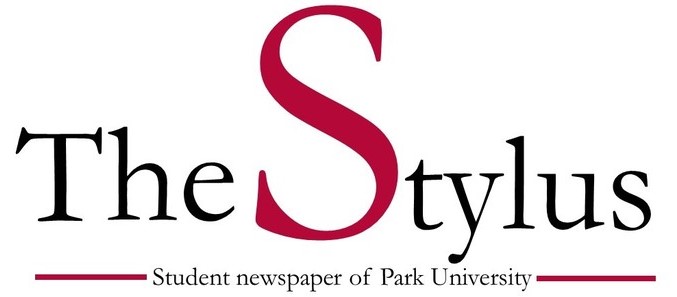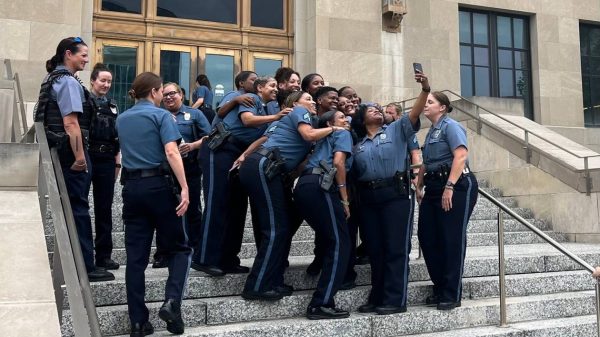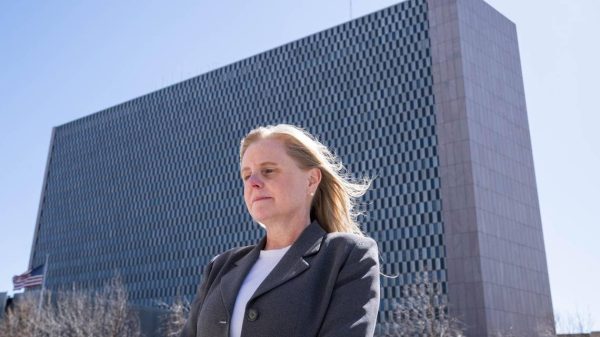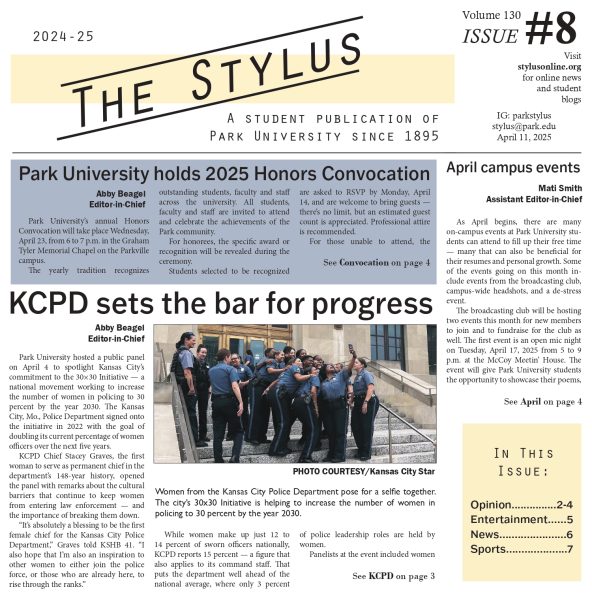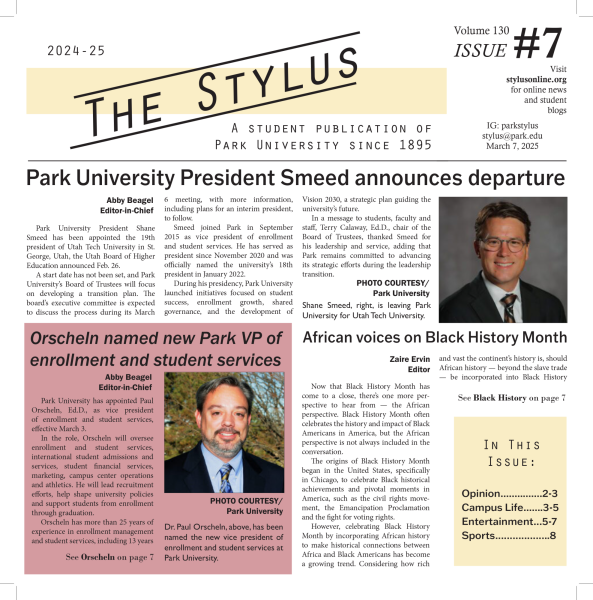Student printing all-inclusive 3-D Parkville campus map
Located on the bottom floor of Park University’s Findlay-Wakefield Science Hall is the laboratory for the geographic information system program.
Inside the laboratory, computers line three of the four walls and in the center of the room is an island as a designated workspace.
At the front of the island sits a newer piece of equipment: a 3-D printer.
The printer has the capability of being programed to recreate small objects and items that are created on the GIS program.
An article in The New Yorker stated, “A 3-D printer prints ink not on a flat substrate, such as paper, but in three dimensions, in successive layers; the ink is substrate and substance in one.”
The adaptability and capability of a 3-D printer can not only make models and architectural designs but can also recreate parts of the body like an ear or even a lifesaving splint that can be used within a human airway.
Junior geography major Jonathan Brock might not be printing ears but he is working on recreating the campus, not only by GIS, but also as a three-dimensional map.
“My goal is to create a three-dimensional model of the campus and surrounding area using Arch GIS as a platform to build it on,” said Brock. “The information in this model is going to be spatially referenced with GPS.”
The original idea, called Deep Map, came from David Fox, assistant professor of geography. The end product of this project will be an all-inclusive map of the campus to include the surrounding area. Brock said this project will help if anyone wants to find a certain building or is curious about the campus layout.
Brock has taken the original GIS mapping project a step further by incorporating the use of the 3-D printer by creating a three dimensional map. But it isn’t as simple as just plugging in a flash drive.
Brock has stumbled on a few issues that will keep him from printing out larger pieces of the campus.
The 3-D printer has open air sides and is not enclosed. The air flows through where the printer head is excreting the heated plastic and causes larger pieces to cool down quicker thus warping the sides.
Brock has decided to print the pieces of the campus in smaller sizes to avoid the plastic’s cooling.
“It is really just a learning experience,” said Brock. “It’s good to just learn with what we have for now.”
Brock hopes to continue this project through his senior year. He said he would like to see others get involved with this project and even assist with possible strategies to help him perfect the map. For now he is just learning as he goes along. To get a visual idea of how the printer works, look for this week’s episode of the Northland News.
Your donation will support the student journalists of Park University. Your contribution will allow us to cover our annual website hosting costs, freeing up other funds for equipment, printing and training.


